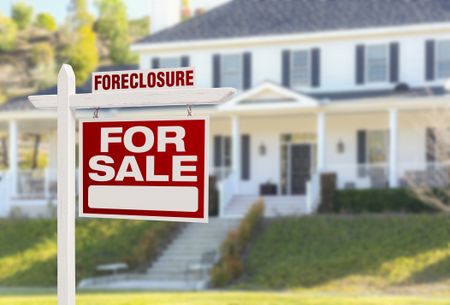The Right Time to Refinance
Homeowners should act now to lock in low rates and lower monthly mortgage payments.

Pow! A powerful blast from lower mortgage interest rates has jump-started an opportunity to refinance, and many homeowners are racing to their lenders. The Mortgage Bankers Association reports that in mid January, refinance applications were up 92% since the beginning of November (while purchase applications were up only 7%).
The prize: a 30-year fixed rate well under 6%. During the week ending January 24, the rate fell to an average of 5.5% (plus 0.4% in fees and points), according to Freddie Mac. That's down from 6.7% in July 2007, and it's the lowest rate since March 2004. The rate on 5/1 hybrid ARMs (the rate is fixed for the first five years and adjusts annually thereafter) has fallen to 5.1%, and one-year ARMs now average 5%.
| Row 0 - Cell 0 | Make the Most of Falling Rates |
| Row 1 - Cell 0 | Protect Your 401(k) in Turbulent Times |
| Row 2 - Cell 0 | Keeping Calm |
| Row 3 - Cell 0 | Shock-Resistant Investments |
| Row 4 - Cell 0 | Stock Bargains in a Wild Market |
As stocks have tanked, investors looking for safety have piled in to Treasury securities. Investor demand raises prices and lowers yields, which in turn lowers long-term mortgage rates because they track yields on the ten-year Treasury note.

Sign up for Kiplinger’s Free E-Newsletters
Profit and prosper with the best of expert advice on investing, taxes, retirement, personal finance and more - straight to your e-mail.
Profit and prosper with the best of expert advice - straight to your e-mail.
Will a re-fi pay?
The better your credit score and the more equity you have in your home, the better the deal you will get. Most lenders won't make loans of more than 90% to 95% of the loan-to-value ratio except to borrowers with the very best credit scores.
Some borrowers with fixed rates can benefit from refinancing, but the biggest beneficiaries are likely to be ARM borrowers whose rates are due to reset. Before you shop, check your mortgage contract to find out what index your ARM is based on (such as the one-year Treasury, 11th District COFI, or LIBOR) and the margin that's added to get your full rate.
To find the current index rate, visit hsh.com. With the latest loan info and the balance of your mortgage (check your latest statement), you can estimate your new payment (see our How much will my mortgage payments be? calculator).
Say you took out a 5/1 ARM in mid 2003 at 4.5% for $250,000. Your current principal-and-interest payment is $1,267. By this summer, assuming an annual cap of two percentage points (a common feature of many ARMs), your rate would jump to 7%, upping your monthly payment to $1,483 on the remaining $227,483 loan balance.
If you refinanced to a 30-year fixed mortgage at 5.5% on the $227,483 loan in the example above, your monthly payment would be only $1,292, assuming you don't finance the closing costs. Note that if you don't plan to stay in your home long enough to recoup the cost of refinancing, it might not be worth it. Closing costs typically run 2% to 4% of the loan amount ($4,000 to $8,000 on a $200,000 loan).
The calculators at Mortgage Professor can help you determine whether refinancing makes sense based on how long you plan to stay in your home.
Market forces and efforts by the Fed to ease credit have reduced the pressure on indexes tied to ARM rates, like the 1-Year Treasury Constant Maturity (TCM) and the LIBOR (London Inter-bank Offered Rate). According to Keith Gumbinger, of HSH Associates, a financial publisher in Pompton Plains, N.J., last summer, a borrower with an ARM tied to either of those indexes could have expected their rate to reset at 7% or 7.25%; now Treasury-based ARMs would reset at 5.25% and Libor-based ARMs at 5.6%. That may console ARM borrowers who face a reset but can't refinance.
No time to mess around
"Windows of opportunity tend to slam down on borrowers' fingers," says Gumbinger. He says that if you want to refinance, now's probably the time.
Stacey Osborne of Aldie, Va., near Washington, D.C., didn't waste any time. The rate on her $300,000 5/1 ARM was going up in July, and the rate had already soared on the $125,000 home-equity line of credit that she and her husband, David, had used to purchase a condo two years ago in Myrtle Beach, S.C.
The Osbornes decided to combine the two loans into a single mortgage. In January, Stacey shopped several lenders, ran the numbers, and landed with USAA (a membership organization for current and retired members of the military and their dependents), which offered a rate of 5.88% on a 30-year, fixed-rate mortgage, with no points.
Prior to refinancing, the Osbornes paid $3,100 a month on the two loans (they paid more than the minimum due each month on the HELOC). Soon they'll pay $2,150. Stacey plans to invest the nearly $1,000 difference.
A jumbo dilemma
If you have a jumbo loan (you borrowed more than $417,000) and want to refinance, the news isn't as rosy.
Jumbo lenders have begun to re-emerge, after all but disappearing when the credit crunch hit last summer. Most jumbos now are sold by portfolio lenders that will keep them on their books. Because it costs lenders more to originate and manage those loans than to pass them along, they cost more --right now about 0.90% more -- than conforming loans that are guaranteed by Fannie Mae and Freddie Mac and can easily be resold.
Still, the average 30-year fixed rate for a jumbo has declined to 6.57% (the week of January 18), a six-month low.
Rates on jumbos won't return to normal levels until borrower delinquencies and foreclosures decrease and home prices stabilize. Relief could come sooner if Congress passes legislation to temporarily raise the conforming loan limit to $625,000 and possibly a maximum of $729,750 in higher-priced areas. That would allow current jumbo borrowers to refinance at lower rates and buyers to re-enter markets like California's, where the median home price is $488,640 (November 2007).
If you can neither afford the interest-rate reset on your current jumbo ARM nor afford to refinance into a fixed-rate jumbo, you have a couple of alternatives. You can re-fi into another 5/1 ARM -- not a permanent solution, but one that buys you time. Or you could split the re-fi between a conforming mortgage and a home-equity loan, assuming you have sufficient equity and a good enough credit score to satisfy lenders.
Get Kiplinger Today newsletter — free
Profit and prosper with the best of Kiplinger's advice on investing, taxes, retirement, personal finance and much more. Delivered daily. Enter your email in the box and click Sign Me Up.

-
 The US Postal Service Does More Than Deliver Mail: Six Ways It Helps Older Adults
The US Postal Service Does More Than Deliver Mail: Six Ways It Helps Older AdultsWith talk of cuts to the USPS swirling, here are the ways it provides vital services to the nation’s older adults.
By Donna Fuscaldo Published
-
 Stock Market Today: Stocks Seesaw After Big Market Rally
Stock Market Today: Stocks Seesaw After Big Market RallyThe latest consumer confidence data showed sentiment remains low.
By Karee Venema Published
-
 Roth IRA Contribution Limits for 2025
Roth IRA Contribution Limits for 2025Roth IRAs Roth IRA contribution limits have gone up. Here's what you need to know.
By Jackie Stewart Last updated
-
 How to Find Foreclosed Homes: Best Foreclosure Listings Sites
How to Find Foreclosed Homes: Best Foreclosure Listings SitesMaking Your Money Last Find foreclosed homes for sale on these foreclosure listing websites. Search for properties on these free, paid or government sites.
By Bob Niedt Last updated
-
 Luxury Home Prices Rise as the Rich Dodge High Mortgage Rates
Luxury Home Prices Rise as the Rich Dodge High Mortgage RatesLuxury home prices rose 9% to the highest third-quarter level on record, Redfin reports, growing nearly three times faster than non-luxury prices.
By Kathryn Pomroy Published
-
 Four Tips for Renting Out Your Home on Airbnb
Four Tips for Renting Out Your Home on Airbnbreal estate Here's what you should know before listing your home on Airbnb.
By Miriam Cross Published
-
 Five Ways to a Cheap Last-Minute Vacation
Five Ways to a Cheap Last-Minute VacationTravel It is possible to pull off a cheap last-minute vacation. Here are some tips to make it happen.
By Vaishali Varu Last updated
-
 How to Figure Out How Much Life Insurance You Need
How to Figure Out How Much Life Insurance You Needinsurance Instead of relying on rules of thumb, you’re better off taking a systematic approach to figuring your life insurance needs.
By Kimberly Lankford Last updated
-
 Amazon Big Deal Days Is Coming! We’ve Got All the Details
Amazon Big Deal Days Is Coming! We’ve Got All the DetailsAmazon Prime To kick off the holiday season with a bang, Amazon Big Deal Days runs Tuesday, October 8 and Wednesday, October 9.
By Bob Niedt Last updated
-
 How to Shop for Life Insurance in 3 Easy Steps
How to Shop for Life Insurance in 3 Easy Stepsinsurance Shopping for life insurance? You may be able to estimate how much you need online, but that's just the start of your search.
By Kaitlin Pitsker Last updated